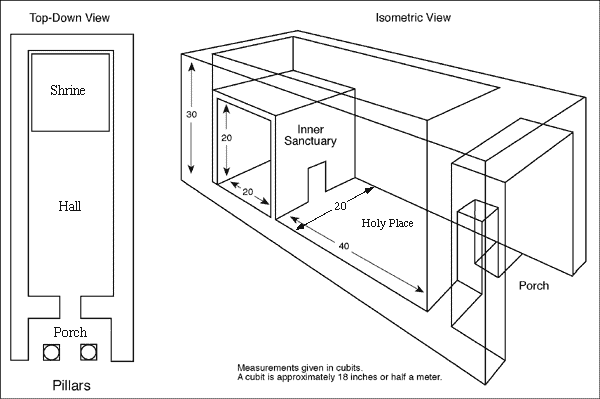You are here
Why Does Alma Mention “the Plan” Ten Times in His Words to Corianton?

Alma 42:13
The Know
Alma 42 concludes Alma the Younger’s powerful, four-chapter exhortation to his son Corianton. After explaining the consequences of sin and expounding upon the resurrection (Alma 39–41), Alma perceived that Corianton was still troubled and confused concerning the justice of God. In particular, Alma noted that Corianton tried “to suppose that it is injustice that the sinner should be consigned to a state of misery” (Alma 42:1). In order to help his son reconcile himself to God’s justice, Alma explained how the balance of justice and mercy is integral to “the great plan of salvation” (Alma 42:5).1
A feature of Alma’s discourse that may be easy to overlook is the symbolic use of the number ten. In many ancient civilizations, including the Israelites, certain numbers were considered to hold sacred meaning or importance. For example, John Welch explained that the number ten “conveyed a tight cluster of symbolic messages associated with the divine realms, namely, completeness, perfection, worthiness, consecration, testing, justice, reverence, atonement, supplication, and holiness (to mention ten).”2 It seems likely that this sacred use of numbers was preserved in the plates of brass and perpetuated by Nephite prophets as part of their literary tradition.3
Evidence from the earliest Book of Mormon manuscripts indicates that its original chapter units were divinely revealed to Joseph Smith,4 and according to the 1830 edition of the Book of Mormon, Alma 39–42 comprised a single, cohesive chapter.5 It may well be significant, therefore, that within these chapters Alma referred to the plan of redemption (or its variants, such as plan of salvation or plan of happiness) precisely ten times.6
During this period, Alma was the high priest over the church and likely fulfilled temple responsibilities similar to those found in the Old Testament (Alma 5:3).7 This is notable because the number ten features prominently in temple architecture and ritual formula:
When the temple of Solomon was built, it also contained many features that came in tens. The height and width of the cherubim in Solomon’s temple were both ten cubits … [the] diameter of the brazen sea was ten cubits … the brass altar was ten cubits high; ten candlesticks were made of gold; and ten tables were placed, five on each side.8
We know that Nephi’s temple, which was probably a model for later Nephite temple worship,9 was itself constructed “after the manner of the temple of Solomon” (2 Nephi 5:16). Thus, it makes sense that Alma, being the high priest in charge of temple worship, would have been aware of this number’s sacred meaning and purposefully utilized it to help his son comprehend the plan of salvation.
Alma’s tenfold invocation of the plan of salvation could also be connected to his high priestly role to determine worthiness in relation to the Ten Commandments. Welch proposed that “the Ten Commandments may have functioned somewhat like a list of modern temple recommend requirements to determine who might ascend into the mountain of the Lord, or the temple (see Psalm 24).”10 In this way, Alma’s exhortation could be seen as symbolically bringing Corianton to stand trial before God for violating one of those sacred Commandments. Alma desired that Corianton would take advantage of the time for repentance that is mercifully allowed under God’s overarching plan of happiness.
Furthermore, Alma’s exhortation to Corianton doesn’t contain the only discernable example of sacred numerals found in the Book of Mormon.11 Of particular relevance is another tenfold repetition of the word “plan” found in Alma 12. In that case, the first three uses of the term are in reference to Zeezrom’s “subtle plan” to deceive the people and turn them against Alma and Amulek (Alma 12:32–33). In contrast, the last seven uses (seven itself being a sacred priestly number12) all refer to the “plan of redemption” (see Alma 12:25–33). The occurrence of negative examples or contexts of a repeated item being supplanted or overpowered by a greater number of positive usages is not an isolated phenomenon and can be found elsewhere in the Book of Mormon.13 It therefore seems more than coincidental that both Alma 12 and Alma 39–42 use the same pattern of tenfold repetition to expound upon the same sacred topic—the plan of redemption.14
The Why
Corianton had bought into the wrong "plan" (as had Zeezrom in Alma 12), and thus Alma's sermon, in order to turn his son back onto the true path, needed to state the totality of the true plan. Even if someone isn’t aware of this tenfold thread, the subconscious effect of its tenfold repetition allows the spirit to gather momentum to a very satisfying conclusion and convincing admonition. Alma's words had a very salutary effect on Corianton.15 This emphatic element may be one of the reasons why these words left such an indelible impression on his son and still leave such a powerful impact on readers today.
Understanding the numeric symbolism that underlays parts of the Book of Mormon can also deepen comprehension of the scriptures and the prophets who wrote them. For example, identifying Alma’s symbolic repetition of “the plan of redemption” helps readers recognize how significant this concept might have been to him. He likely saw God’s plan as a perfect or complete solution to his son’s moral confusion and wayward behavior. Not only does Alma repeat the concept exactly ten times, but in Alma 39–42 he uses five connotative variations to describe it: plan of redemption, restoration, salvation, mercy, and happiness.
Readers should be cautious to not assume that every instance of a sacred number, whether explicitly mentioned or implied through repetition, is symbolically significant. Yet many of the text’s attestations of symbolic numbers are so distinctive and cogent that it is difficult to see them as anything other than intentional. The fact that specific words, phases, or concepts are repeated a sacred number of times in a meaningful context is evidence that the authors were familiar with ancient numeric symbolism. Exploring the sacred significance of numbers, therefore, reveals an insightful layer of subtle complexity in the Book of Mormon.
Further Reading
John W. Welch, “Counting to Ten,” Journal of Book of Mormon Studies 12, no. 2 (2003): 42–57, 113–14.
Corbin Volluz, “A Study in Seven: Hebrew Numerology in the Book of Mormon,” BYU Studies Quarterly 53, no. 2 (2014): 57-83.
John W. Welch, “Number 24,” Reexploring the Book of Mormon: A Decade of New Research, ed. John W. Welch (Provo, UT: FARMS, 1992), 272–274.
- 1. See Book of Mormon Central, “When Does the Book of Mormon First Talk About the Plan of Salvation? (2 Nephi 9:6),” KnoWhy 33 (Feb. 15, 2016).
- 2. John W. Welch, “Counting to Ten,” Journal of Book of Mormon Studies 12, no. 2 (2003): 57.
- 3. See 1 Nephi 3:19, Enos 1:1, and Mosiah 1:4.
- 4. See Royal Skousen, “How Joseph Smith Translated the Book of Mormon: Evidence from the Original Manuscript,” Journal of Book of Mormon Studies 7, no. 1 (1998): 27–28.
- 5. See Thomas W. Mackay, “Mormon as Editor: A Study in Colophons, Headers, and Source Indicators,” Journal of Book of Mormon Studies 2, no. 2 (1993): 107.
- 6. Alma 39:18; 41:2; 42:5, 8, 11, 13, 15, 16, 31.
- 7. For general information concerning priesthood responsibilities and temple worship in the Old Testament, see Lawrence H. Schiffman, “Priests,” in Harper’s Bible Dictionary, ed. Paul J. Achtemeier (San Fransico, CA: Harper and Row, Publishers, 1985 ), 821—823. See also, Old Testament Student Manual Genesis–2 Samuel (Salt Lake City, UT: The Church of Jesus Christ of Latter-day Saints, 1980–1981), 159–192.
- 8. Welch, “Counting to Ten,” 57.
- 9. See Mark Alan Wright, “Axes Mundi: Ritual Complexes in Mesoamerica and the Book of Mormon,” Interpreter: A Journal of Mormon Scripture 12 (2014): 79–96. See also John W. Welch, “The Temple in the Book of Mormon: The Temples at the Cities of Nephi, Zarahemla, and Bountiful,” in Temples of the Ancient World, ed. Donald W. Parry (Salt Lake and Provo, UT: Deseret Book and FARMS, 1994), 297—387.
- 10. Welch, “Counting to Ten,” 45.
- 11. Several studies have demonstrated that ten, seven, twenty-four, and fifty are all symbolically significant throughout the text. See Corbin Volluz, “A Study in Seven: Hebrew Numerology in the Book of Mormon,” BYU Studies Quarterly 53, no. 2 (2014): 57–83; John W. Welch, “Number 24,” in Reexploring the Book of Mormon: A Decade of New Research, ed. John W. Welch (Salt Lake City and Provo, UT: FARMS, 1992), 272–274; Book of Mormon Central, “Why Did Alma Ask Church Members Fifty Probing Questions (Alma 5:14–15)” KnoWhy 112 (June 1, 2016); Book of Mormon Central, “Why Did Alma Wish to Speak with the ‘Trump of God’ (Alma 29:1),” KnoWhy 136 (July 5, 2016).
- 12. Volluz, “A Study in Seven,” 74: “Perhaps most interestingly, the book of Alma appears to be structured around the number seven and, more specifically, around double the number of seven. This may be particularly appropriate in the book named for Alma, the high priest in the land of Zarahemla, for seven is featured prominently in aspects of the law of Moses with which Alma would have been intimately acquainted (see Alma 30:3). The priestly manual contained in the book of Leviticus is replete with instances of the number seven and its multiples, calling for seven sprinklings or anointings (Lev. 4:6, 17; 8:11; 14:51) and marking off heptadic periods of times of impurity (Lev. 12:2; 13:5, 31), of purification or consecration (Lev. 8:33; 15:19; 16:14, 19), or of sacred time.”
- 13. Welch, “Counting to Ten,” 54–55.
- 14. Because of their different form and negative context, it may seem tempting to rule out the first three instances of “plan” in Alma 12 as having anything to do with the later seven repetitions of “plan of redemption.” However, it seems that the ancient literary “rules” concerning repetition were not so rigid or inflexible. Antithetical parallelism, for instance, was common in ancient literature. In this example, all instances have at least one word in common, and in total there are ten instances that conceptually deal with an overarching plan. The fact that early usage of the term “plan” is directly antithetical to the later usage of “plan of redemption” suggests that an intentional dichotomy may be at play. Although such an assertion is certainly not provable, the attestation of similar instances and variations within the text supports its viability (see footnote 12).
- 15. Alma 49:30 implies that Corianton took Alma’s teachings to heart, repented of his transgressions, and returned to the ministry: “Yea, and there was continual peace among them, and exceedingly great prosperity in the church because of their heed and diligence which they gave unto the word of God, which was declared unto them by Helaman, and Shiblon, and Corianton, and Ammon and his brethren, yea, and by all those who had been ordained by the holy order of God, being baptized unto repentance, and sent forth to preach among the people.”
KnoWhy Citation
Related KnoWhys
Subscribe
Get the latest updates on Book of Mormon topics and research for free







